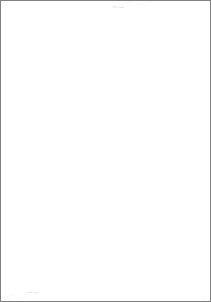Citation
Ahmad, Selamat and Ismail, Mohd Razi
(2009)
Deterministic model approaches in identifying and quantifying
technological challenges in rice production and research and
in predicting population, rice production and consumption in
Malaysia.
Pertanika Journal of Tropical Agricultural Science, 32 (2).
pp. 267-291.
ISSN 1511-3701
Abstract
In general, rice production and sufficiency is the main concern to all Asian countries in currently facing the
ever growing population and climatic uncertainties. The consumption in Malaysia relies largely on the locally
produced (70%) and imported (30%) rice for years. The price hike of this staple food, which can be categorized
as a security food crop with an annual production of 1.6 million tons (beras) yielded from about 650,000 ha
of the harvested paddy irrigated- and non-irrigated growing areas nationwide, could possibly be expensive
to the lower-income consumers. With “no further reduction” in the modelled per capita rice consumption
(82.3 kg/person/ year) versus the increasing population, various efforts must be made in term of research and
technological advancement, increased cropping hectarage, as well as active extension program to increase the
production of rice for consumption, self-sufficiency and more importantly, for having strong rice stock-file
accumulation. Based on the data gathered from the past 27-years (1980 – 2007), the deterministic mathematical
models of the Malaysian population, rice per capita consumption and five rice yield models versus years
(1980 – 2007 and 2008 – 2030) were developed and predicted. The proposed model was based on the
national average yields over the years and the model could be used to predict the yield ‘close’ to the nation’s
rice production in the years ahead. The data on the crop cutting test or survey were used for comparison
purposes. With the derivatives of the yield models, the quantitative technological advancement indexes were
used in identifying the research objective, scope and areas, as well as in quantifying the contribution of crops
and their management-related technologies in the past, present and predicted technological performances
in rice production. To reach sufficient rice production at a relatively faster rate, the scope of the research’s
objective should be based on the high yield model, in which the averaged yield could reach 13.4 t/ha in the
year 2030. The priority order of the research areas would be irrigation/water > crop establishment-related
management > sustainability of the existing management technology > large plot production-related adaptive
studies (technological uniformity studies) > continual varietal improvement. The local released varieties are
ecologically suited to the Malaysian rice growing areas, where varietal development and improvement are
generally time consuming. With the current planted hectareage, coupled with the inclusion of the planned
additional 100,000 ha (assumed to be staggered), as planned by the Ministry of Agriculture and with the
conversion of the non-fully to fully irrigated areas by 2012, the Malaysian rice self-sufficiency is predicted to
be observed/achieved in 2012. The ‘modified higher-order polynomial’ yield model which was conditioned with the scope of the above research objective and the area priorities predicts the rice production of 2.0, 4.4
and 9.1 million t/ha in 2010, 2020 and 2030, respectively. With the modelled minimum per capita consumption
(82.3 g/person/year) and the predicted population of 29.3 (2010), 36.7 (2020) and 45.7 million (2030), the
respective consumption, surplus and self-sufficiency would be 2.4, 3.0 and 3.8 million tons, -0.4, 1.3 and 5.3
million tons and 83, 144 and 241%, respectively. The surplus could then be used for the stock-pile accumulation
and export.
Download File
![[img]](http://psasir.upm.edu.my/style/images/fileicons/application_pdf.png)  Preview |
|
PDF
Deterministic_model_approaches_in_identifying_snd_quantifying_technological_challenges_in_rice_production.pdf
Download (3MB)
|
|
Additional Metadata
| Item Type: |
Article
|
| Divisions: |
Institute for Mathematical Research |
| Publisher: |
Universiti Putra Malaysia Press |
| Keywords: |
Population model; Rice production and technological advancement indexes and models; Rice consumption, self-sufficiencies; Irrigation and management related technologies; Rice import and surplus |
| Depositing User: |
Norhazura Hamzah
|
| Date Deposited: |
25 Mar 2010 11:00 |
| Last Modified: |
22 Sep 2015 03:50 |
| URI: |
http://psasir.upm.edu.my/id/eprint/4697 |
| Statistic Details: |
View Download Statistic |
Actions (login required)
 |
View Item |

